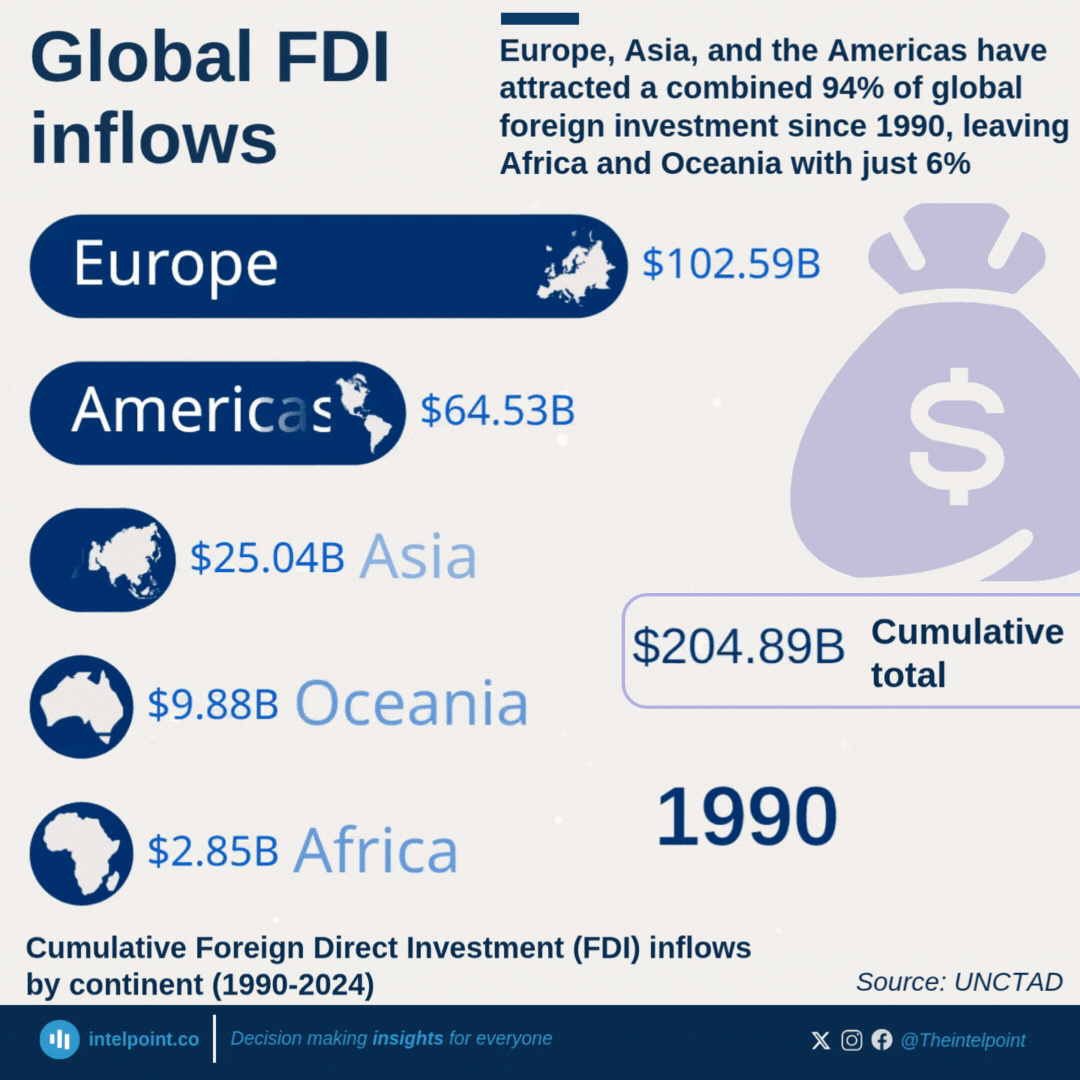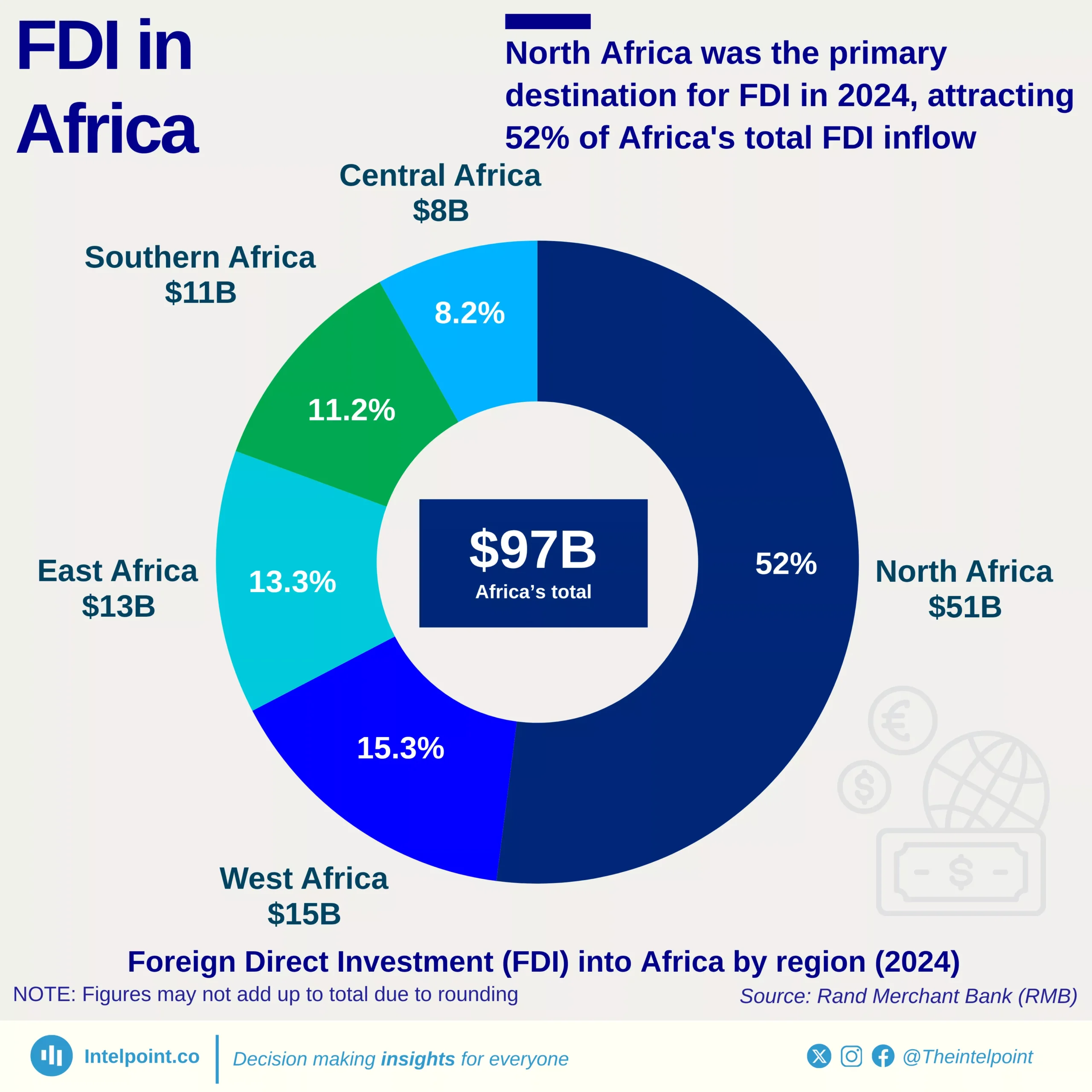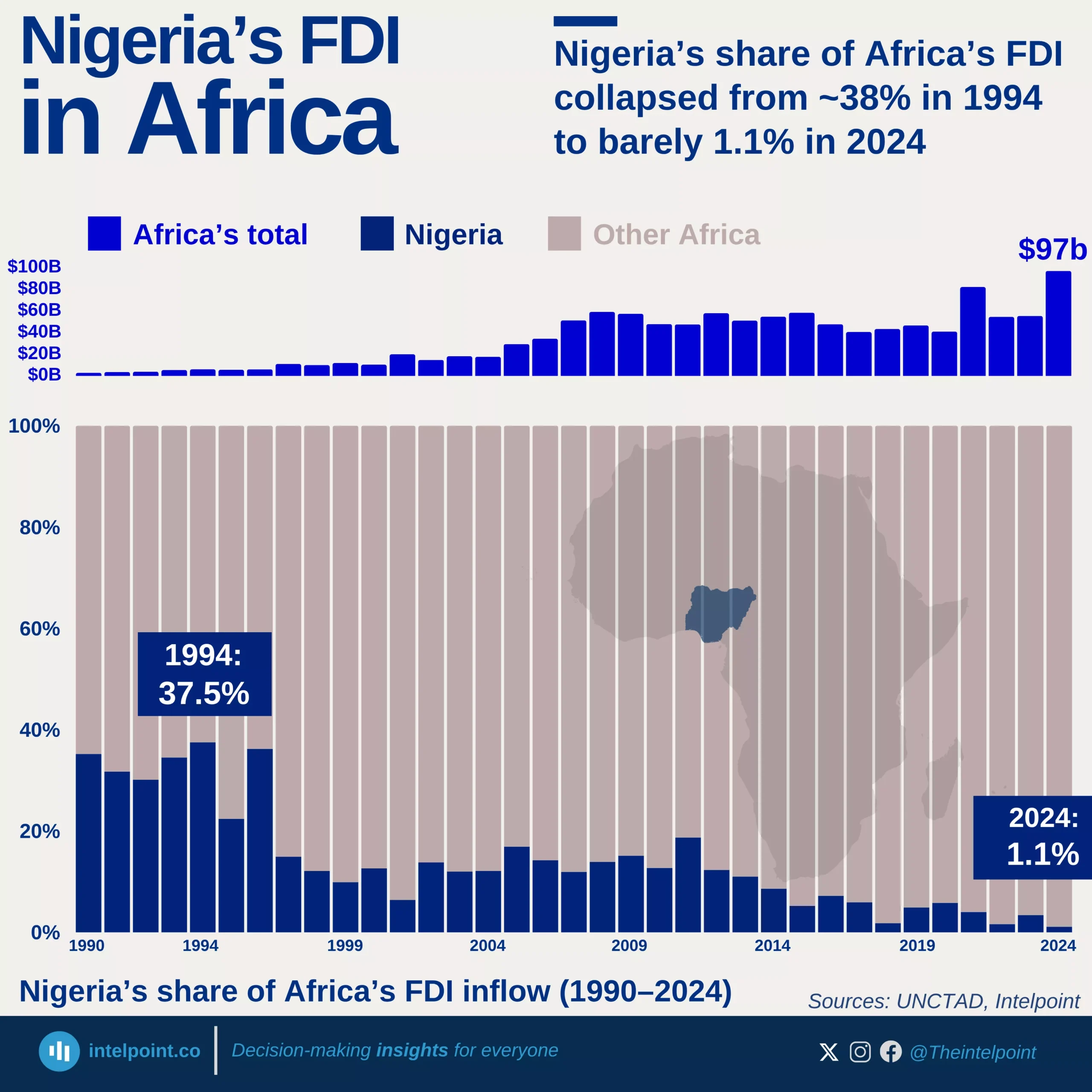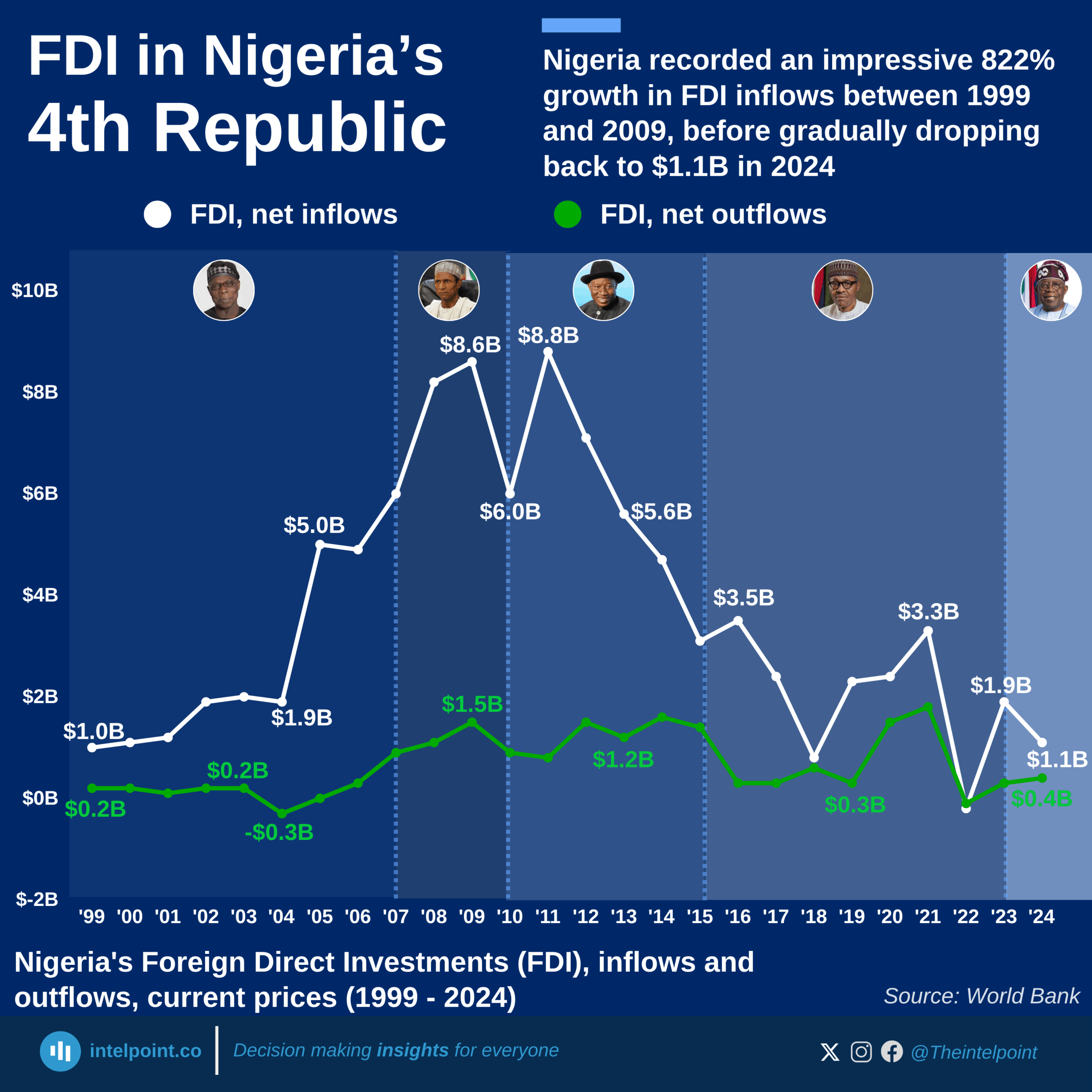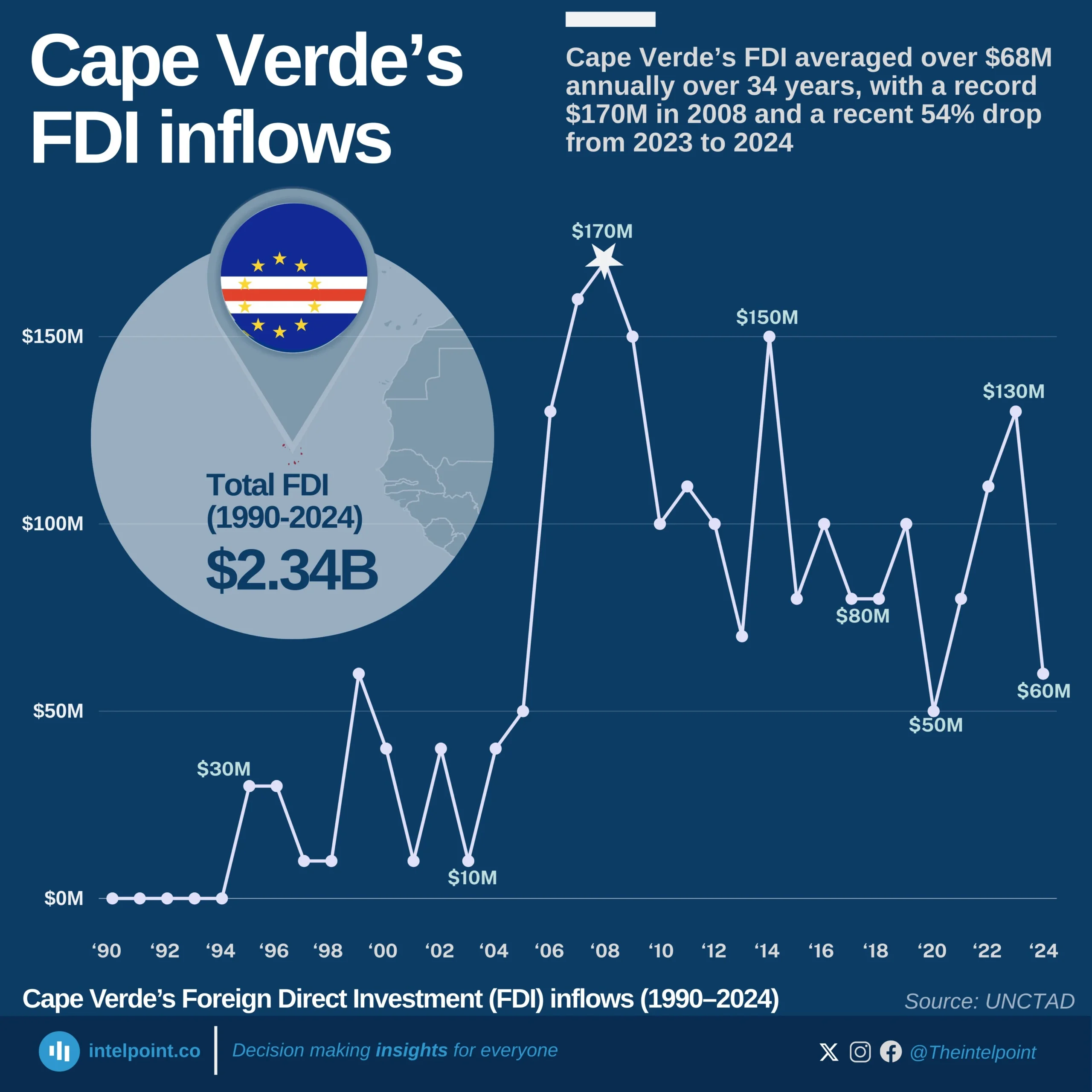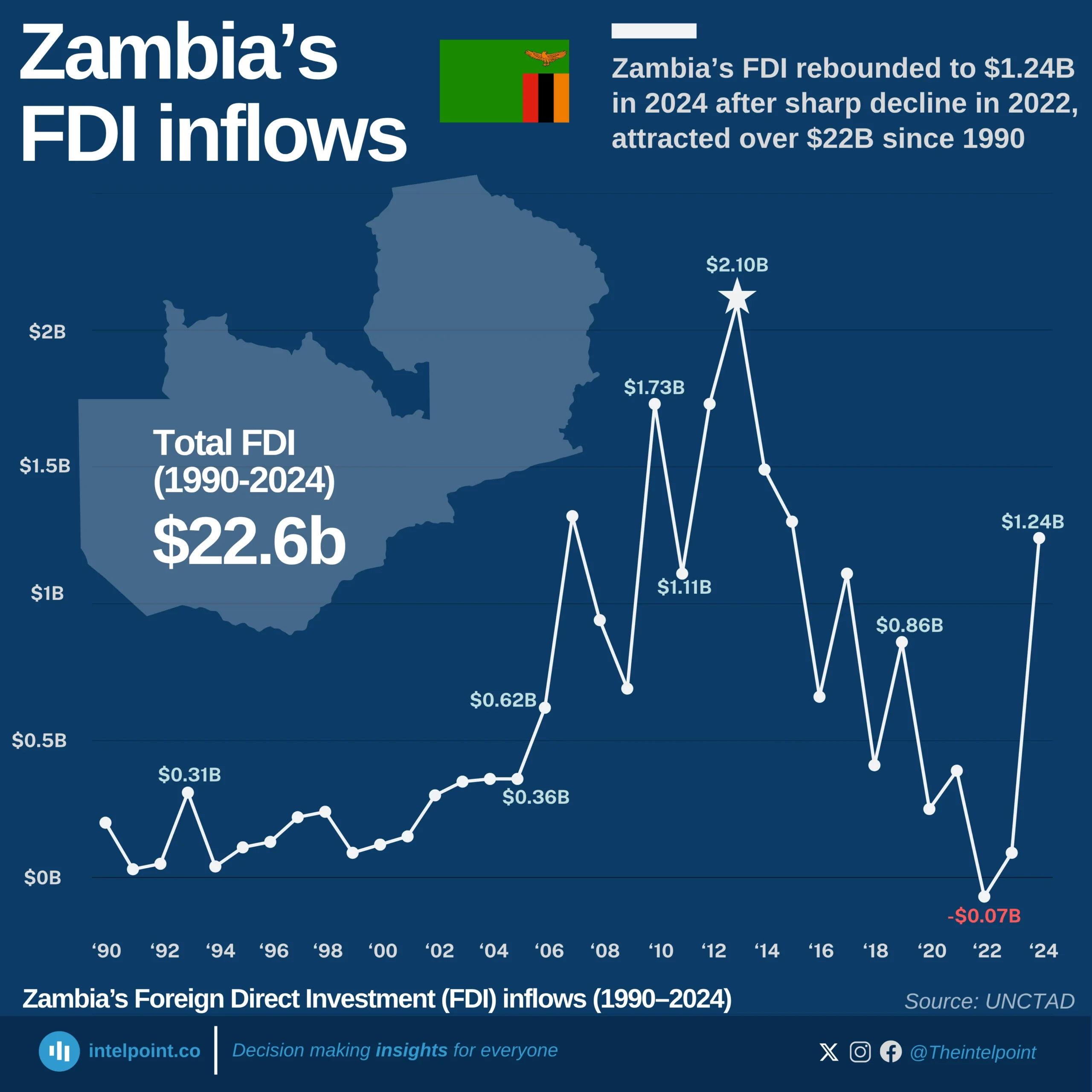From 1990 to the early 2000s, South Africa saw relatively modest levels of foreign direct investment. A few bumps occurred, but it wasn’t until 2021 that the country experienced an unprecedented surge, with FDI reaching $40.22 billion, over 13 times the previous year’s inflow.
The significant surge in South Africa’s FDI inflows in 2021 was primarily driven by a large intra-firm share exchange between Naspers, a South African multinational, and its Dutch-listed subsidiary, Prosus, which acquired 45% Naspers Ltd from the latter's existing shareholders. This substantially inflated FDI figures for South Africa.
However, the spike was not sustained, and investment levels dropped sharply in subsequent years.
